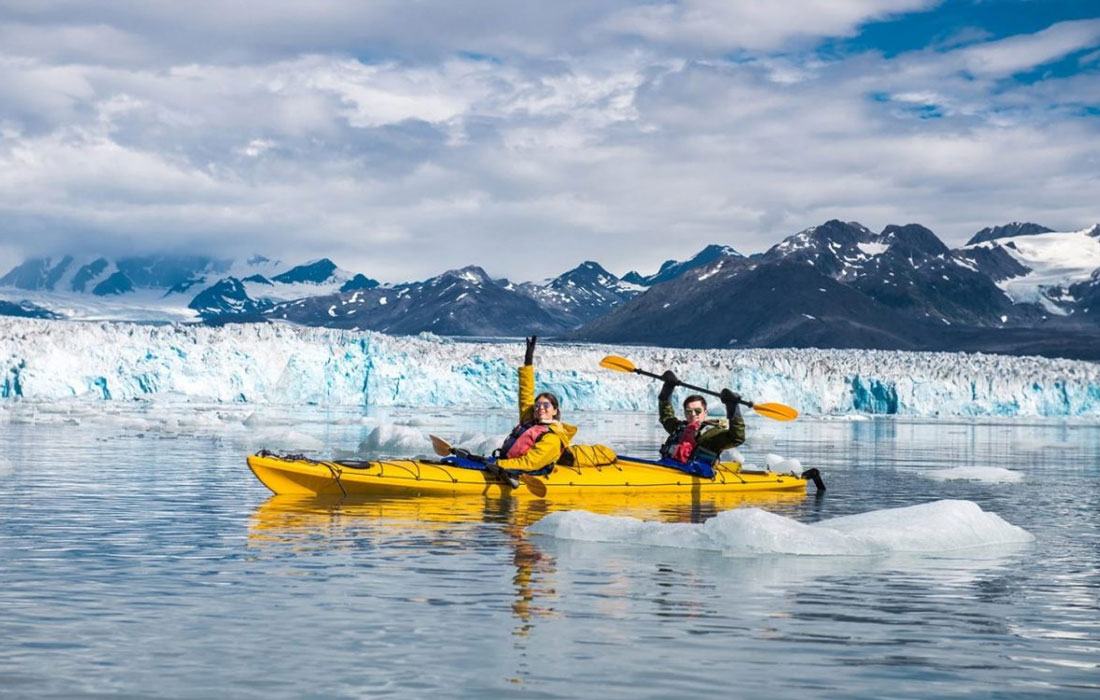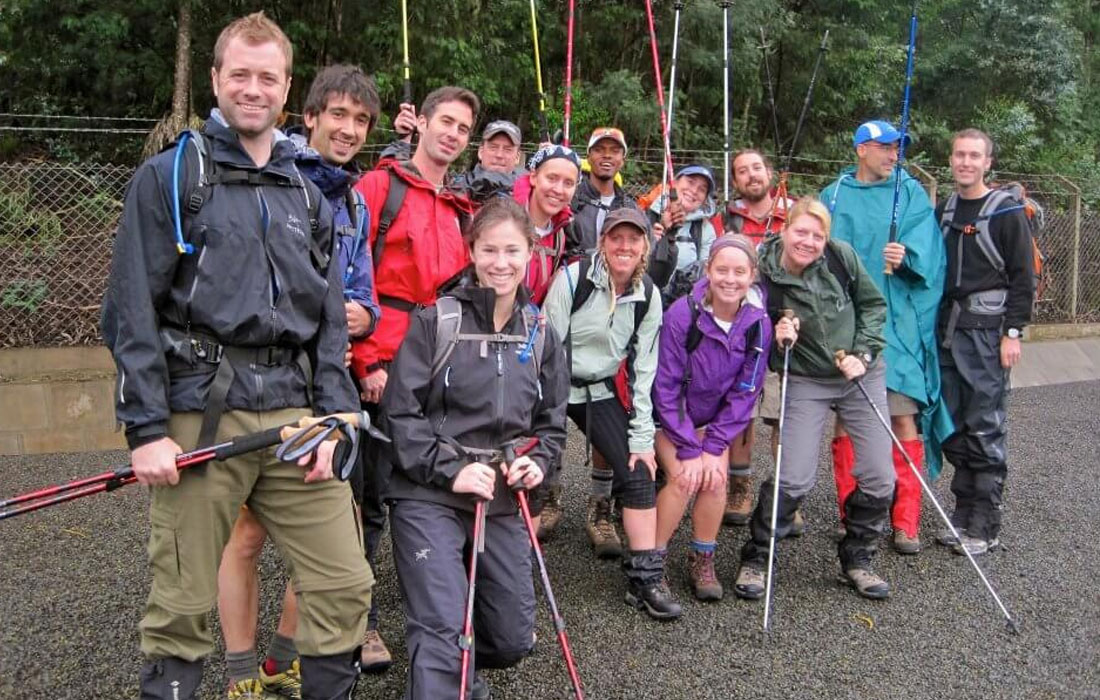Kilimanjaro Weather
The weather keeps varying from extremely hot to cold on Mount Kilimanjaro. It doesn’t experience complete temperature changes from season to season on Kilimanjaro.
Kilimanjaro Weather
If you want to determine the exact temperature on Mount Kilimanjaro, it depends on altitude and time of the day.
The temperature at the base of Kilimanjaro Mountain is around 21 to 27 degrees Celsius. And the night temperature at Uhuru Peak can range between 20 and -20 degrees Fahrenheit.
Kilimanjaro Mountain, like all other great mountains, can create weather that can be highly variable and challenging to predict. So, as a hiker, you must be prepared for sunny conditions and rain, wind, cold, snow, and warm.
You can experience a dry season, rain, and snow anytime on Mount Kilimanjaro. At one moment, you may experience baking sunshine, and at the next, you may experience a bitter wind, so the temperature is dramatic and drastically changes there.
Mount Kilimanjaro is big enough to create its weather systems, which are 19,341 ft. above sea level. The trade winds that move across the ocean, drawing moisture upwards, are interrupted by the mountain on the equator. This brings rain and snow because it causes the wind to push up toward the summit.
Kilimanjaro Kilimanjaro Snow On The Top Of Mount
The southeast trade winds result in a long rainy season between March and May. Rain and snow on Mount Kilimanjaro’s summit are brought by the southerly winds from the Indian Ocean, which are laden with moisture. The southern slopes get the most rainfall during this season.
In the northeast, the short rains come from dryer wind in November. The rains are more straightforward and less intense than during the long rains, as it hasn’t traveled across an ocean. Northerly slopes experience the most rainfall during this season.


Kilimanjaro Kilimanjaro Temperatures
The moderate temperature is around 70 to 80 degrees Fahrenheit at the base of Mount Kilimanjaro, where the climb starts. When you ascend, the temperature will decrease as you go through the mountain’s five ecological zones from the base.
Uhuru Peak, at the summit of Kilimanjaro and in the arctic zone, experience night temperature ranges from 20 to -20 degrees Fahrenheit. That’s why we suggest you bring all the necessary gear with you.
Kilimanjaro Kilimanjaro Weather Through The Climate Zones
As you make your way up, you’ll experience the weather changing through the climate zones.


Kilimanjaro Kilimanjaro Cultivation Zone
- 2,600 to 6,000 ft. – Altitude
- 500 to 1,800 mm- Precipitation
The surrounding base of Kilimanjaro is the cultivation zone which comprises farmland with fertile volcanic soil. Also, this area gets plenty of annual rainfall. You will mostly pass through the region on your way to the trailhead as there are primarily temperate conditions.
Kilimanjaro Kilimanjaro Forest Zone
- 6,000 to 9,200 ft. – Altitude
- 2,000 to 1,000 mm – Precipitation
We will climb through a tropical rainforest called the montane forest, which will absorb moisture from the mountain forming underground streams and springs.
You will be able to experience weather conditions like warm and humid with mists starting under the dense canopy. The thick cloud cover is not uncommon, as it can be muddy underfoot.


Kilimanjaro Kilimanjaro Heath/Moorland Zone
- 9,200 to 13,200 ft. – Altitude
- 1,300 to 530 mm- Precipitation
You will emerge from the trees into a healthy Moorland zone after hiking through the forest. Also, you will become more exposed to the wind and rain as the overgrown tropical forest offers a way to tall grasses and giant heathers.
At night, the temperature drops significantly but can remain warm throughout the day. It becomes a more comfortable hiking experience as the humidity lessens and the trails are dryer.
However, rain can occur anywhere on the mountain but tends to be minimal. The sun’s rays can be harsh, so you’ll need sunscreen, and temperatures at night can be bitterly cold.
Kilimanjaro Kilimanjaro Alpine/High Desert Zone
- 13,200 to 16,500 ft – Altitude
- 10 in (250 mm) – Precipitation
We will enter an arid, high desert zone while climbing higher, where you can see small and hardy plants surviving at an altitude. The wind speeds continue to increase and cause little rainfall.
Temperature can be pretty warm during the daytime, and the mercury drops quickly in the evening, due to which conditions get much colder.


Kilimanjaro Kilimanjaro Arctic Zone
- 16,500+ ft. – Altitude
- 4 in (100 mm) – Precipitation
The Summit zone or Arctic zone is above 16,000ft. This barren desert is characterized by substantial rocky outcrops, volcanic scree, glaciers, and very little rainfall.
This region, also known as extreme altitude, has approximately 49%of the oxygen at sea level. It is a barren and bleak place. At night time, you can experience blustery winds and freezing temperatures.There will be ice, snow underfoot, and bitterly cold even at midday as you set off for your summit, and the sun’s radiation will be harsh.
To keep your core body temperature up, you must wear warm layers. Also, the dry air will dehydrate you quickly, so sunscreen is essential for any exposed body parts. You will feel the trails dustier, the air much thinner, and vies far-reaching and dramatic.
Kilimanjaro Kilimanjaro Weather Variations
The weather depends on the time of the year when you will visit Kilimanjaro.
- In April and May, you can experience rain.
- From June to October, you can experience the dry season.
- From January to march, you can experience a bit colder weather.

Kilimanjaro On The Mountains
Hear from our travelers
We team up with the best to give you an unmatchable experience.
From the mountain view to the accommodation, flight booking, and everything associated with the vacation, Good Earth Expedition had an excellent team, and we sure had the best vacation experience.
Mathew Flunum

AT GOOD EARTH EXPEDITION, WE GO WILD WORLD WIDE
From the mountain view to the accommodation, flight booking, and everything associated with the vacation, Good Earth Expedition had an excellent team, and we sure had the best vacation experience.
Mathew Flunum
The Good Earth Expedition was impressive with their destination ideas, and there were just amazing people.
Germain

PERFECTLY PLANNED AND EXECUTED BY CONSEA
The Good Earth Expedition was impressive with their destination ideas, and there were just amazing people.
Germain
From the Tanzania budget Safari to the Wildlife photography and Alaskan Wilderness, the trip was carefully planned by Good Earth Expeditions.
John Boxler

CONSEA, PROVIDED ALL THE VALUABLE INFORMATION
From the Tanzania budget Safari to the Wildlife photography and Alaskan Wilderness, the trip was carefully planned by Good Earth Expeditions.
John Boxler
Excellent trip covering several tourist sites in Northeastern Tanzania. Good hotels and accommodations, plus a friendly and competent team from Good Earth Expeditions.
Brian J Mangereli

EXCELLENT TRIP COVERING SEVERAL TOURIST
Excellent trip covering several tourist sites in Northeastern Tanzania. Good hotels and accommodations, plus a friendly and competent team from Good Earth Expeditions.
